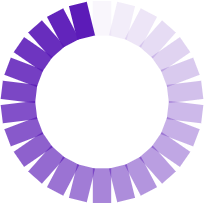Typography Tips: Choosing Fonts for Your Design Projects
Typography plays a crucial role in graphic design, setting the tone and personality of your projects. Whether you’re designing a website, poster, or logo, selecting the right fonts can greatly enhance the visual impact and effectiveness of your designs. Here are some typography tips to help you choose fonts for your design projects:
1. Understand Font Categories
Fonts can be broadly categorized into several main types, each with its unique characteristics:
- Serif Fonts: Serif fonts have decorative strokes or “serifs” at the ends of their letters. They are often perceived as traditional, elegant, and formal, making them suitable for print materials such as books and newspapers.
- Sans-Serif Fonts: Sans-serif fonts lack serifs and have a clean, modern appearance. They are commonly used for digital designs, websites, and interfaces due to their readability and versatility.
- Script Fonts: Script fonts mimic handwriting and cursive styles, adding a personal and decorative touch to designs. They are often used for invitations, logos, and branding projects to convey elegance and sophistication.
- Display Fonts: Display fonts are highly decorative and designed for use in headlines, logos, and other prominent elements. They come in a variety of styles, ranging from bold and expressive to quirky and playful.
- Monospaced Fonts: Monospaced fonts have fixed-width characters where each letter occupies the same amount of horizontal space. They are commonly used for coding, typewriter-style designs, and creating a retro aesthetic.
Understanding the characteristics of each font category will help you choose the most appropriate typefaces for your design projects.
2. Consider Brand Personality
When selecting fonts for branding projects or corporate identities, consider the personality and values of the brand you’re representing. Choose fonts that align with the brand’s identity and target audience. For example, a tech company may opt for modern sans-serif fonts to convey innovation and forward-thinking, while a luxury brand may choose elegant serif fonts to evoke sophistication and exclusivity.
3. Prioritize Readability
Readability is paramount in typography, especially for body text and long-form content. Choose fonts that are easy to read, even at smaller sizes and on different devices. Sans-serif fonts like Arial, Helvetica, and Roboto are popular choices for digital designs due to their clean and legible appearance. When using decorative or script fonts, reserve them for headlines or display purposes and pair them with a more readable font for body text.
4. Create Contrast
Contrast in typography refers to the difference between font styles, weights, sizes, and colors within a design. Utilize contrast to create visual interest and hierarchy in your designs. Pairing complementary fonts with contrasting characteristics—such as a bold headline font with a light body text font—can create dynamic and visually appealing layouts.
5. Limit Font Choices
While it’s tempting to use a wide variety of fonts in your designs, it’s often more effective to limit your font choices to two or three complementary typefaces. Using too many fonts can create visual clutter and confusion, diluting the impact of your design. Stick to a cohesive font palette to maintain consistency and cohesiveness across your design projects.
6. Test and Iterate
Before finalizing your font choices, it’s essential to test them in the context of your design and iterate as needed. Experiment with different font combinations, sizes, and alignments to find the most effective layout. Solicit feedback from peers or clients to gain valuable insights and refine your designs further.
Conclusion
Typography is a powerful tool in graphic design, allowing designers to convey messages, evoke emotions, and create memorable experiences. By understanding font categories, considering brand personality, prioritizing readability, creating contrast, limiting font choices, and testing designs, you can choose fonts that enhance the visual impact and effectiveness of your design projects.
This content piece provides valuable typography tips for choosing fonts in design projects while remaining informative and engaging.




















































